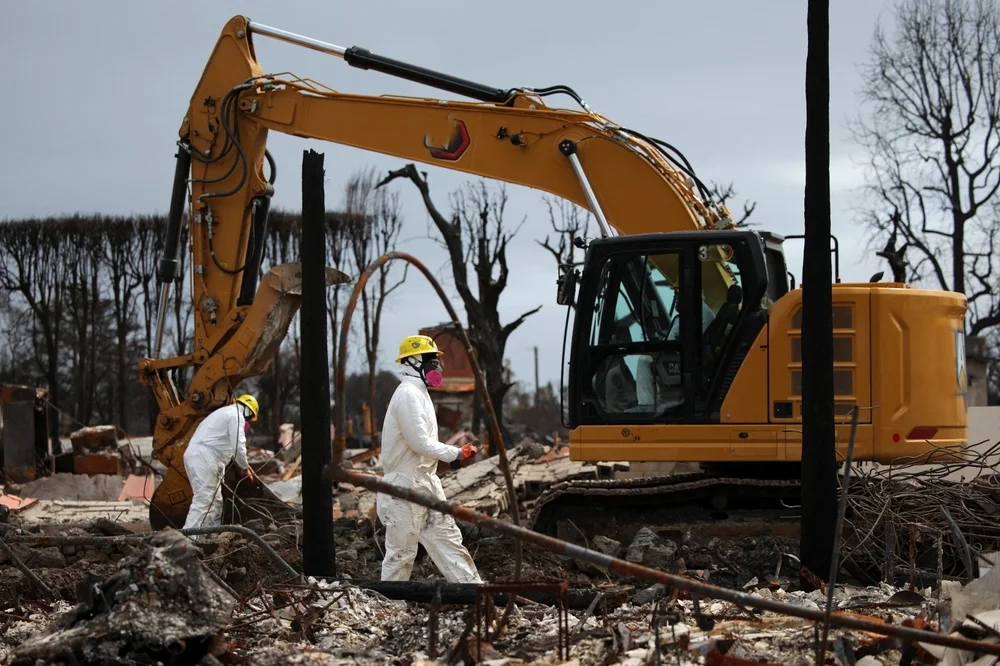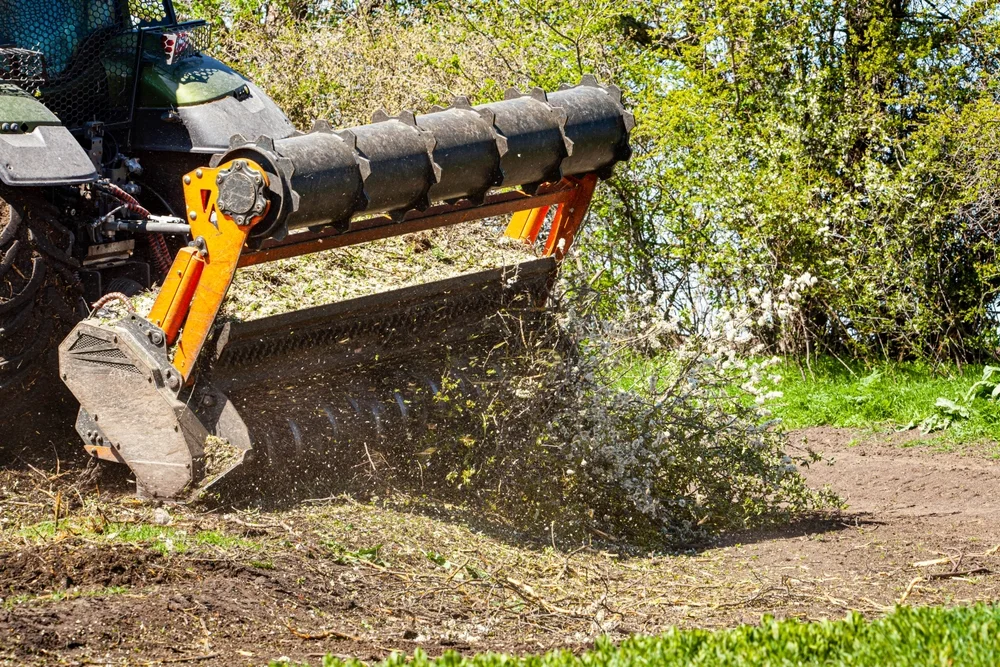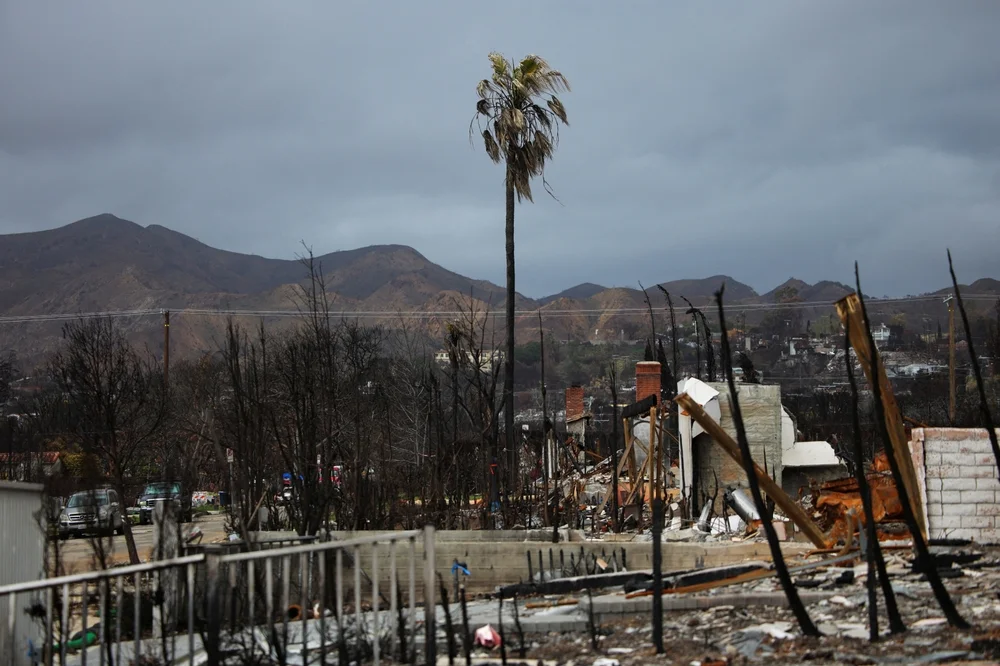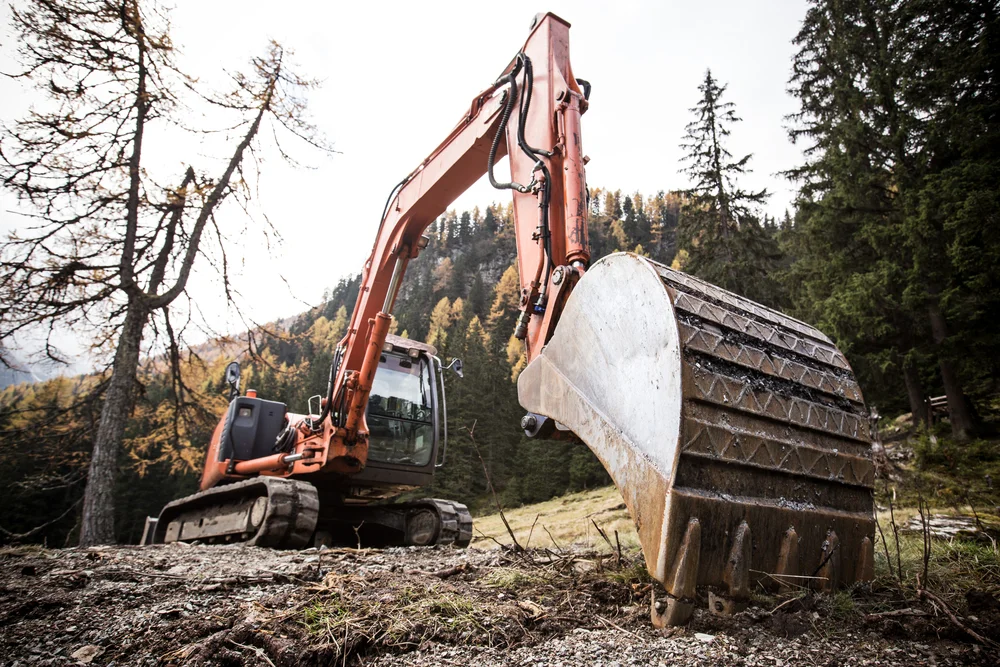Post-fire restoration is a high-priority phase in recovering landscapes damaged by wildfires. It involves multiple stakeholders, from utility companies and forestry agencies to municipal crews and private landowners, working to stabilize soil, remove hazards, and prepare the land for ecological recovery.
These operations typically begin as soon as fire containment is achieved, in forests, grasslands, and utility corridors affected by the blaze.
Heavy-duty mulchers provide a fast, safe, and environmentally responsible solution by clearing burned vegetation in place, reducing erosion risks, and supporting long-term land regeneration.

Wildfires can transform healthy landscapes into unstable, hazardous zones in a matter of hours. Once a blaze is contained, the clock starts ticking for recovery efforts. Without immediate intervention, burned areas face accelerated soil erosion, invasive species colonisation, and infrastructure damage from fallen or unstable vegetation. Speed and precision are critical, not only to stabilize the environment but also to restore safe access for communities, utilities, and land management teams.
Heavy-duty mulchers provide a unique advantage in these urgent conditions because they combine vegetation removal and processing in one streamlined operation. This eliminates the delays caused by having to fell, haul, chip, or burn debris separately. Their ability to handle everything from fine brush to dense, charred tree trunks means they can work across varied terrain, from remote mountain slopes to utility rights-of-way, without the need to constantly change equipment. This versatility makes them indispensable for agencies, contractors, and municipalities tasked with large-scale post-fire restoration.
After a wildfire, the landscape is littered with blackened trees, shrubs, and undergrowth. Left unmanaged, this debris can act as fuel for future fires, hinder regrowth, and contribute to soil instability. Heavy-duty mulchers address all of these issues at once by shredding vegetation directly into fine, even mulch on-site.
This process delivers multiple ecological and operational benefits:
By processing vegetation in place, mulching avoids the need for costly and time-consuming debris transport or burning. This not only accelerates site clearance but also preserves the nutrient-rich organic matter within the soil, which is essential for supporting the germination of native plant species. In this way, heavy-duty mulching doesn’t just clean up the aftermath, it actively supports ecological recovery.
After a wildfire, access routes such as service roads, hiking trails, and utility corridors are often obstructed by fallen timber, unstable slopes, and other hazards. These blockages can delay inspections, emergency response, and infrastructure repairs. Heavy-duty mulchers address this challenge by rapidly clearing paths and removing obstacles, restoring safe access for personnel and equipment.
Key operational advantages include:
By reopening essential routes quickly, mulchers support faster recovery timelines, minimise operational downtime, and allow restoration crews, utility workers, and safety inspectors to carry out their work without unnecessary delays.
Restoring a fire-affected landscape requires more than simply removing debris, it demands a structured, safety-conscious, and environmentally responsible approach that addresses both immediate hazards and long-term land recovery. Post-fire mulching is most effective when executed with a clear plan that accounts for site-specific risks, ecological sensitivity, and operational efficiency. Planning typically begins as soon as fire containment is confirmed, ensuring that restoration crews can act while conditions are still manageable and before further deterioration occurs.
By following a sequence that prioritises hazard mitigation before general vegetation removal, teams can reduce risks for workers, protect remaining ecological value, and accelerate recovery timelines. This balance of urgency and precision is what allows heavy-duty mulchers to transform unstable, hazardous terrain into stable, recoverable land.

Before heavy machinery moves into a post-fire area, the site must be thoroughly assessed to ensure safe and efficient operations. Burned landscapes often conceal hazards that can compromise both equipment and personnel, such as partially burned trees that may collapse unexpectedly, deep root cavities hidden beneath ash layers, or residual hot spots that can reignite under certain conditions.
Comprehensive pre-operation planning should include:
A detailed plan not only safeguards workers and equipment but also ensures regulatory compliance, which is critical when working in environmentally sensitive areas or on public lands. By having these steps in place before the first machine starts, restoration teams can work more efficiently and avoid costly delays caused by unforeseen hazards.
“Post-fire mulching is more than cleanup, it’s a restoration tool that lays the foundation for a stronger, healthier ecosystem.”
Once on site, the execution phase must be systematic, beginning with the most hazardous zones before addressing broader clearing tasks. This prioritisation ensures that immediate risks are neutralised and that the work area is progressively stabilised for both safety and ecological recovery.
Best practices for on-site execution:
Following this structured workflow allows crews to manage hazards, maintain ecological integrity, and prepare the land for natural regeneration or future restoration projects. By combining hazard mitigation with soil protection, heavy-duty mulching not only clears the way for recovery but actively supports it.

Post-fire recovery is not only an urgent response to damage but also an opportunity to strengthen the land’s long-term resilience while managing restoration budgets effectively. Heavy-duty mulching is uniquely positioned to deliver on both objectives, offering measurable gains in ecological health and operational efficiency. By processing vegetation directly on site, mulchers help protect soil, encourage natural regeneration, and significantly reduce the resources needed for follow-up maintenance.
This dual benefit, environmental stewardship combined with cost control, makes mulching one of the most sustainable and financially sound strategies for rehabilitating fire-impacted landscapes.
A freshly mulched surface does far more than improve aesthetics. The protective ground cover left behind plays a crucial role in stabilising the post-fire ecosystem. By shielding the soil from direct sun, wind, and rain, it prevents the rapid erosion that is common in exposed, burned areas. This organic blanket also traps moisture, slowing evaporation and maintaining the hydration necessary for seedlings to establish.
Key ecological benefits:
By improving the land’s ability to recover naturally, heavy-duty mulching reduces the need for extensive replanting and artificial soil stabilisation measures, making it an essential step in responsible fire recovery strategies.
From a financial perspective, mulching offers significant savings over traditional debris removal and vegetation control methods. Because heavy-duty mulchers cut, shred, and distribute vegetation in a single pass, they eliminate the need for separate felling, hauling, chipping, or burning.
The operational savings are clear:
Over time, the mulch layer itself works as a natural growth suppressant, slowing the return of dense vegetation and delaying the need for subsequent clearing cycles. This extended maintenance interval means fewer labour costs, less fuel consumption, and a reduced carbon footprint over the lifespan of the restoration project.
By combining ecological restoration with budget-conscious practices, heavy-duty mulching delivers results that are not only immediate but also enduring, ensuring that resources can be allocated to other critical post-fire recovery priorities without compromising the quality of the rehabilitation work.
In post-fire environments, safety and compliance are more than operational checkboxes, they are essential pillars of successful recovery. Burned landscapes present unique hazards, from weakened trees and unstable ground to hidden hot spots and damaged infrastructure. Without a rigorous safety framework, even experienced crews risk injury, equipment loss, and delays in restoration work. Likewise, adherence to environmental and industry regulations is critical for protecting natural resources, securing funding, and maintaining public trust.
A well-implemented safety and compliance plan safeguards workers, nearby communities, and the recovering ecosystem while ensuring that every stage of the project aligns with legal and ecological requirements.

Post-fire zones demand heightened awareness and discipline. Charred trees may fall without warning, soils can give way under heavy equipment, and residual heat pockets can ignite debris if disturbed.
For these reasons, crews must follow strict, pre-established safety protocols that are tailored to post-fire conditions:
This disciplined approach ensures crews can work productively without compromising personal safety or the stability of the restoration site. Over time, maintaining a strong safety culture reduces incident rates, shortens recovery timelines, and helps preserve costly equipment from avoidable damage.
Post-fire restoration is closely monitored by environmental agencies, forestry departments, and local authorities to ensure that recovery efforts do not create new ecological problems.
Heavy-duty mulching must be carried out within a framework of environmental protection acts, wildfire recovery guidelines, and site-specific permit requirements.
Key compliance measures:
By aligning operations with these standards, restoration teams avoid costly fines or work stoppages and demonstrate a commitment to sustainable land recovery. This approach not only meets regulatory requirements but also reinforces the credibility of contractors and agencies involved in the restoration effort.
Our heavy-duty mulcher teams deliver safe, eco-friendly recovery solutions tailored to challenging post-fire environments.
To provide the best experiences, we use technologies such as cookies to store and/or access device information. Consenting to these technologies will allow us to process data such as browsing behavior or unique IDs on this site. Failure to consent or withdrawing consent may adversely affect certain features and functions.